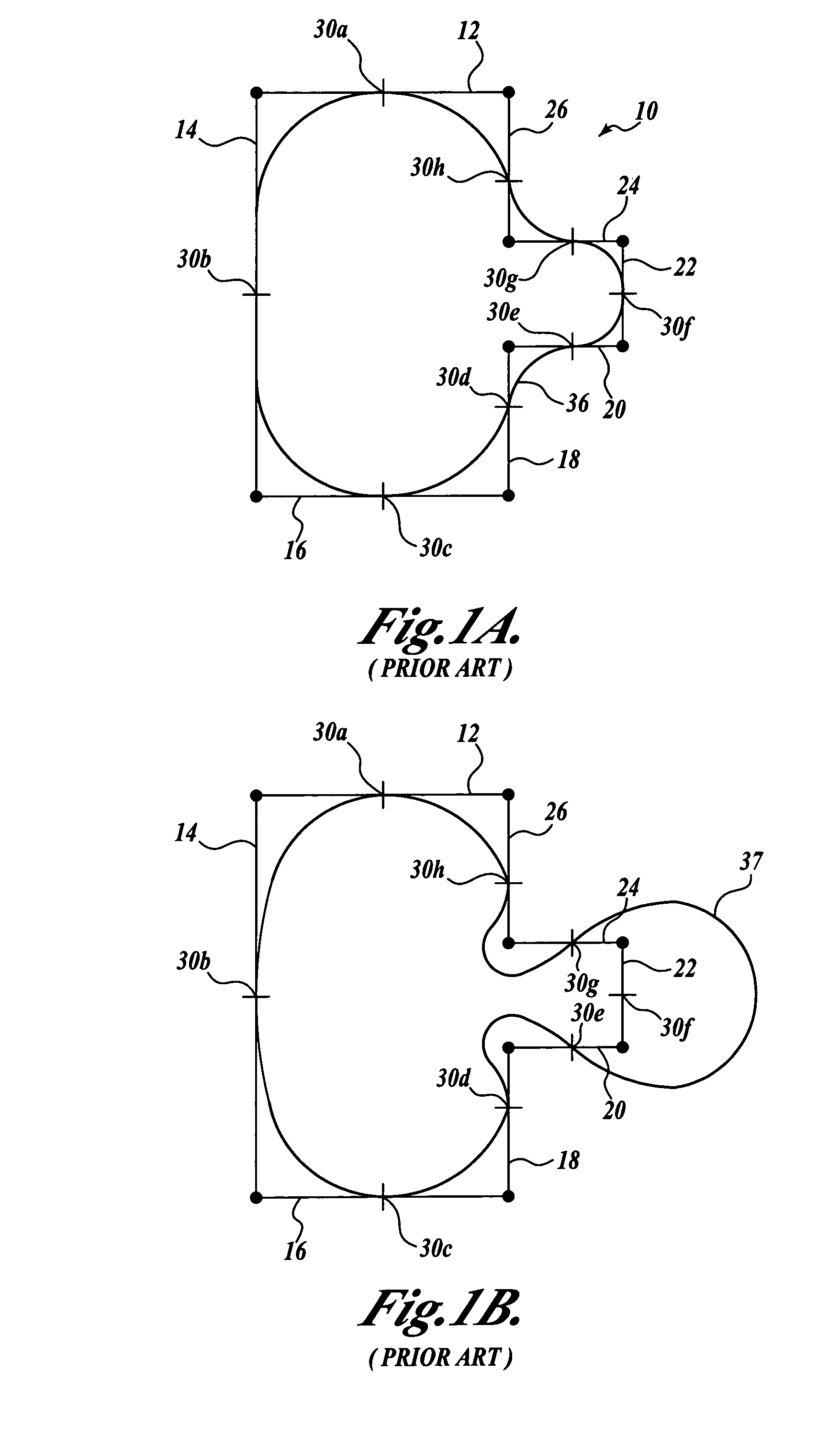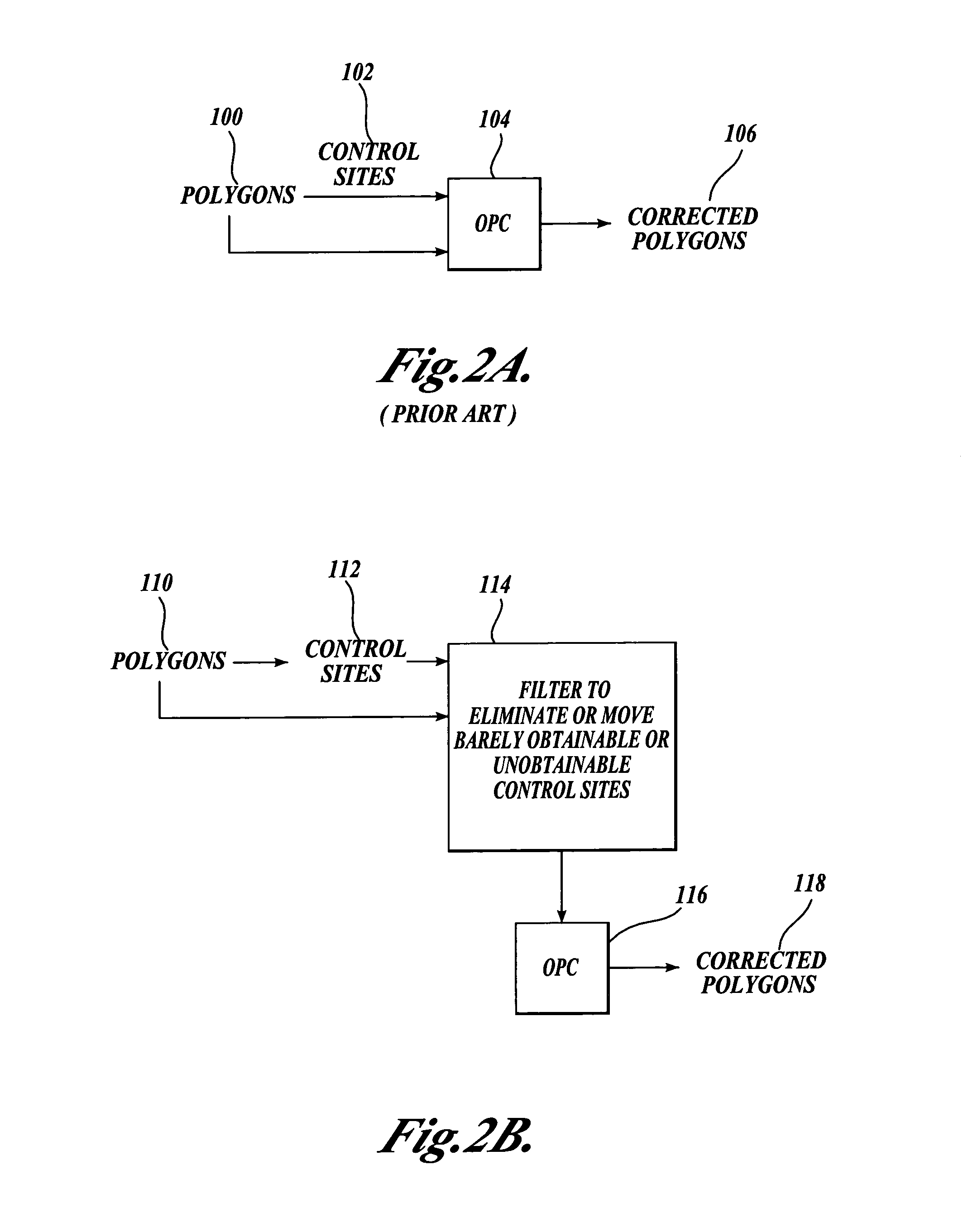Site control for OPC
a site control and opc technology, applied in the field of layout verification methods, can solve the problems of optical distortion, poor or unexpected output of opc tools,
- Summary
- Abstract
- Description
- Claims
- Application Information
AI Technical Summary
Benefits of technology
Problems solved by technology
Method used
Image
Examples
Embodiment Construction
[0021]FIG. 2A illustrates a conventional method for applying an optical and process control (OPC) tool to a file that defines objects to be created on a semiconductor wafer. The objects to be created are typically defined in the file as polygons 100 in a layout language such as GDSII or OASIS. The polygons are fragmented by a computer into a number of edge segments that extend around the perimeter of each polygon. In addition, control sites 102 are defined where the edge placement error (EPE) for each edge segment should be minimized or zero, as well as where measurements of simulated process parameters in the area of the edge segment are to be made. Control sites are generally oriented in a direction that is normal to the length of the edge segment. The initial position of the control sites can be made by rules, such as placing the control site at the middle of each edge segment. Also, rules may determine that some edge segments may be too short to have a control site.
[0022]The fra...
PUM
| Property | Measurement | Unit |
|---|---|---|
| perimeter | aaaaa | aaaaa |
| distance | aaaaa | aaaaa |
| angle | aaaaa | aaaaa |
Abstract
Description
Claims
Application Information
 Login to View More
Login to View More - R&D
- Intellectual Property
- Life Sciences
- Materials
- Tech Scout
- Unparalleled Data Quality
- Higher Quality Content
- 60% Fewer Hallucinations
Browse by: Latest US Patents, China's latest patents, Technical Efficacy Thesaurus, Application Domain, Technology Topic, Popular Technical Reports.
© 2025 PatSnap. All rights reserved.Legal|Privacy policy|Modern Slavery Act Transparency Statement|Sitemap|About US| Contact US: help@patsnap.com



